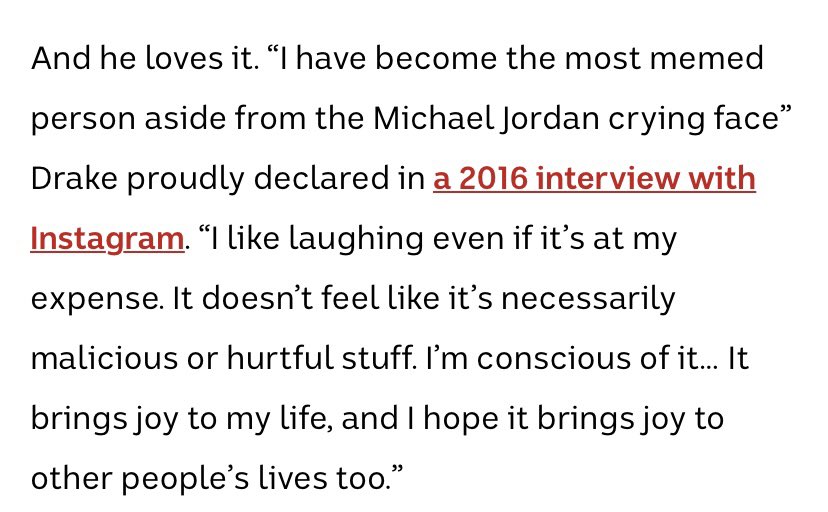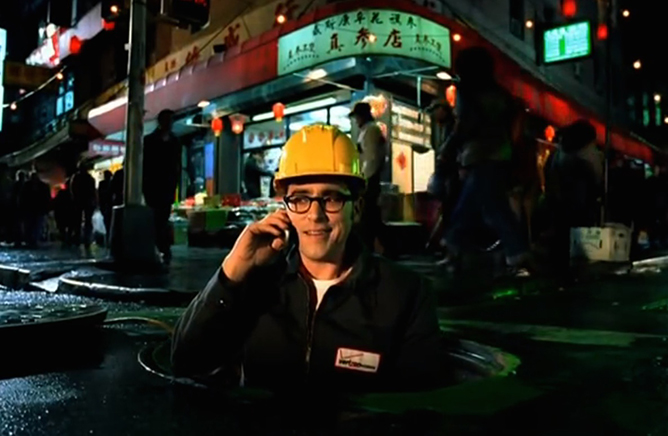
I've scripted, filmed, and produced over 150+ video ads.
Some worked okay and some were a grand slam.
The ones that worked best followed a simple framework with a little bit of flair.
If you study some of the greatest ads -- they also followed the same framework.
Use this 🧵
Some worked okay and some were a grand slam.
The ones that worked best followed a simple framework with a little bit of flair.
If you study some of the greatest ads -- they also followed the same framework.
Use this 🧵
Here you are — grinding day after day to scale your business.
Everybody around you is saying you gotta use video.
You go online and you read the blog post “100 video stats you should know for 2021”
You’re like holy sh*t. I needed to start creating videos yesterday.
Everybody around you is saying you gotta use video.
You go online and you read the blog post “100 video stats you should know for 2021”
You’re like holy sh*t. I needed to start creating videos yesterday.
At night, you dream about video.
You wake up knowing this is the “IT” factor you’ve been missing in your marketing.
So, you start.
Today, we’re adding video to the mix.
You pick up a notepad and quickly realize you don’t know how tf to script a video that’ll work.
You wake up knowing this is the “IT” factor you’ve been missing in your marketing.
So, you start.
Today, we’re adding video to the mix.
You pick up a notepad and quickly realize you don’t know how tf to script a video that’ll work.
So, you get back on google. You read a blog From “adspreso” that reads “17 video ads you should copy.”
You feel a tad bit more confident.
You go back to the notepad with all the scribbles and quickly realize you still are lost.
You feel a tad bit more confident.
You go back to the notepad with all the scribbles and quickly realize you still are lost.
Hours go by and you’re sitting there with no script, no framework, and no concrete plan to create a badass video.
Don’t worry though — even the best were once in your shoes.
BUT, if you study enough of the best business videos — you’ll eventually realize one thing.
Don’t worry though — even the best were once in your shoes.
BUT, if you study enough of the best business videos — you’ll eventually realize one thing.
They all follow a similar framework.
Here’s where this thread will help you save a ton of time and help you make a ton of money.
NO NOT IN A SCAMMY WAY with rented Lambos in your garage, yelling at a Rhode mic, and targeting 18-year-olds who are confused as hell.
Here’s where this thread will help you save a ton of time and help you make a ton of money.
NO NOT IN A SCAMMY WAY with rented Lambos in your garage, yelling at a Rhode mic, and targeting 18-year-olds who are confused as hell.
I mean true customers that love and believe in your product.
So, how?
It’s a simple 3 part framework:
1. Problem
2. Agitate
3. Solution
Sounds simple?
It is.
But, insanely effective.
Let’s dissect it.
So, how?
It’s a simple 3 part framework:
1. Problem
2. Agitate
3. Solution
Sounds simple?
It is.
But, insanely effective.
Let’s dissect it.
1. Problem
Sounds obvious, right?
Wrong.
Here’s what most businesses do.
They’ll start with “do you face x problem?”
And then transition directly into solution.
That’s not enough.
Sounds obvious, right?
Wrong.
Here’s what most businesses do.
They’ll start with “do you face x problem?”
And then transition directly into solution.
That’s not enough.
Consumers need to be taken on an emotional journey to make a decision.
How do you do that?
You find your target audiences BIGGEST problem to get their attention.
And you find the “Hidden Problem” beneath the biggest problem to start taking them on an emotional journey.
How do you do that?
You find your target audiences BIGGEST problem to get their attention.
And you find the “Hidden Problem” beneath the biggest problem to start taking them on an emotional journey.
For example, let’s look at Slack.
If Slack released a video and opened with “do you spend too much time in your email” and nothing else, then you’d be like yeah, and move on…
But...
If Slack released a video and opened with “do you spend too much time in your email” and nothing else, then you’d be like yeah, and move on…
But...
... If Slack said, “Do you spend too much time in your email and not enough time getting the work done that’s needed” then the result would be very different.
Example one just highlights a problem many people face.
Example one just highlights a problem many people face.
Examples two highlight the main problem their facing and the hidden problem underneath it.
This helps grab the consumers attention, retain it, and start taking them on an emotional journey.
This helps grab the consumers attention, retain it, and start taking them on an emotional journey.
Here’s the breakdown:
Problem: Spend too much time in their inbox.
Hidden Problem: Not enough time focusing and getting the work done that’s needed to be a productive day.
Nail this, and you’ll have the consumer hooked.
Problem: Spend too much time in their inbox.
Hidden Problem: Not enough time focusing and getting the work done that’s needed to be a productive day.
Nail this, and you’ll have the consumer hooked.
2. Agitate
If you’ve nailed the hidden problem then understanding how to agitate that problem will be fairly easy.
This portion focuses on really taking the consumer through an emotional journey.
You want consumers to not only feel and visualize the pain.
If you’ve nailed the hidden problem then understanding how to agitate that problem will be fairly easy.
This portion focuses on really taking the consumer through an emotional journey.
You want consumers to not only feel and visualize the pain.
Here’s how I’d write the script to agitate the prob.
Script (Agitation Portion)
“I don’t get it…why the hell did Karin email this to me?”
“This doesn’t need to be emailed.”
“Whatever.”
“Okay. Let’s focus.”
*exits Gmail
*ding - another notification
OMG Karin…STOP.
Script (Agitation Portion)
“I don’t get it…why the hell did Karin email this to me?”
“This doesn’t need to be emailed.”
“Whatever.”
“Okay. Let’s focus.”
*exits Gmail
*ding - another notification
OMG Karin…STOP.
“I swear if I get another email, I’m going to slam my laptop shut, throw it out the window, and start my weekend early.”
The above:
- Agitates the original problem.
- Focuses on the hidden problem
- story for emotional journey
- descriptive to help visualize prob
The above:
- Agitates the original problem.
- Focuses on the hidden problem
- story for emotional journey
- descriptive to help visualize prob
Why does this matter?
Because every emotion, in contrast, has an opposing emotion.
People that face a problem — want to find a solution
People make decisions based on emotions and then renationalize the decision with facts.
Because every emotion, in contrast, has an opposing emotion.
People that face a problem — want to find a solution
People make decisions based on emotions and then renationalize the decision with facts.
3. Promise
They're hooked.
They feel the pain.
They visualize it.
Now, they crave the solution.
At this point — if you’ve done the above correctly then this shouldn’t be too difficult.
Again here’s how I’d write the script (w/visuals too)
They're hooked.
They feel the pain.
They visualize it.
Now, they crave the solution.
At this point — if you’ve done the above correctly then this shouldn’t be too difficult.
Again here’s how I’d write the script (w/visuals too)
*as Alex goes to slam the computer and throw it out the window
Voice from the computer: “WAAAAAAIIIITT”
*Alex open it back up
Little voice continues: “you’re slacking, but I’m slack…and I don’t like Karins either.”
(Continued in next tweet)
Voice from the computer: “WAAAAAAIIIITT”
*Alex open it back up
Little voice continues: “you’re slacking, but I’m slack…and I don’t like Karins either.”
(Continued in next tweet)
“You need to focus.”
“Be productive.”
“So that you can get that work done, get your raise, and go-to Tahiti for 2 weeks to get away from the email obsessive Karin.”
“And me, I make Karin’s pointless emails go away.”
(Continues in next tweet)
“Be productive.”
“So that you can get that work done, get your raise, and go-to Tahiti for 2 weeks to get away from the email obsessive Karin.”
“And me, I make Karin’s pointless emails go away.”
(Continues in next tweet)
“I’m the messaging software that helps you communicate quickly and efficiently with your coworkers (if you want to) so that you don’t have to bounce from browser to browser.”
“Instead, you turn your notification off and HANDLE YOUR BUSINESS BOSS.”
“Let’s do each other a favor.”
“Instead, you turn your notification off and HANDLE YOUR BUSINESS BOSS.”
“Let’s do each other a favor.”
“You download me and I’ll set you free.”
CTA
Again, same thing.
They continue to feel and visualize the pain while you show the upside of the solution.
You promise it.
You deliver it.
Your customer is happy.
CTA
Again, same thing.
They continue to feel and visualize the pain while you show the upside of the solution.
You promise it.
You deliver it.
Your customer is happy.
That's it. Use this framework!
Trust me. It's reliable and will help you more than you can imagine.
Here's what not to do:
- don't sound like a robot
- don't focus on only selling your product
- don't focus on too small of a problem
- don't be selfish
Trust me. It's reliable and will help you more than you can imagine.
Here's what not to do:
- don't sound like a robot
- don't focus on only selling your product
- don't focus on too small of a problem
- don't be selfish
Want more breakdowns and how-tos on your feed? Then make sure to follow @alexgarcia_atx because I'm doing one for the next 40 days.
If you rather get it in your inbox, then 👇
bit.ly/3flYp6b
If you rather get it in your inbox, then 👇
bit.ly/3flYp6b
Takeaways:
- Find the problem and hidden problem
- Agitate the hell out of it
- Take the consumer on an emotional journey
- Be descriptive so they can visualize
- provide the solution
- clear CTA
- Find the problem and hidden problem
- Agitate the hell out of it
- Take the consumer on an emotional journey
- Be descriptive so they can visualize
- provide the solution
- clear CTA
• • •
Missing some Tweet in this thread? You can try to
force a refresh





